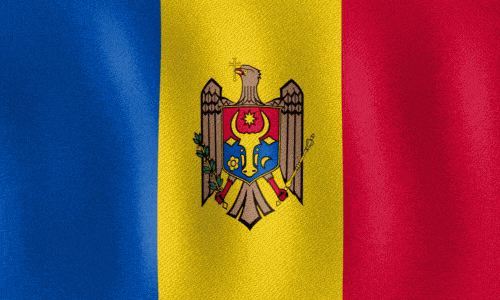Tourism in Moldova
Despite its compact size, the Republic of Moldova has a significant potential for tourism development, represented by the geomorphological features of its territory, including all natural landmarks, landscape reserves, nature reserves and geological monuments of European and world importance.
The priority forms of tourism in Moldova are rural tourism, viticulture and winemaking tourism, cultural tourism, health-improvement tourism.
Rural tourism
Village tourism is especially popular. The rural environment of the Republic of Moldova, its agricultural communities and picturesque villages are an important source for:
- providing traditional accommodation services to visitors in rural settings;
- providing opportunities for visitors to participate in rural activities;
- introducing local folklore, local entertainment and traditions;
- presenting folk crafts with the opportunity to participate in the process of these works;
- providing an opportunity to purchase items made by folk craftsmen.
Viticulture and winemaking tourism
Vineyards are also an important tourism destination in the rural sector. Due to their quality, the wines produced in the Republic of Moldova are in demand internationally. There are 142 wineries in the country, 23 of which have experience in receiving visitors. Here tourists have the opportunity to get acquainted with the technology of wine production, to observe the process of wine bottling and, of course, to taste the final product.
The Republic of Moldova, as a wine-growing and wine-making country, offers a wide range of routes for the visitors: wine cellars and underground towns, wine factories, enterprises of primary wine processing, production of sparkling wines, divinan, sherry, balsam, etc. The wineries together with the surrounding vineyards are part of the tourist route “Wine Road in the Republic of Moldova” and represent an important motivation for visiting the country. They are a means of promoting the best Moldovan tourist product.
Cultural tourism
The Republic of Moldova has a rich cultural heritage which can be successfully used in tourism. The earliest surviving cultural monuments are the remains of Heto-Dacian settlements and Roman fortresses. The ruins of medieval fortresses, archaeological complexes such as Orheul Vechi, rock monasteries, manor houses and peasant huts represent a variety of spectacles for tourists. In total, there are 140 monuments of cultural heritage that can be included in tourist itineraries. In Chisinau there are many monuments of cultural heritage, local architecture of the nineteenth and twentieth centuries, which can be used as objects for tourism.
There are 87 museums in the Republic of Moldova. These museums are specialized, but at least 20 of them can be offered to the general public. Most museums in the Republic of Moldova are located in buildings of special architectural importance and have rich collections of exhibits.
Part of the national tourist product is the diversity of cultures of different regions of the country. The Republic of Moldova is a mix of nationalities and cultures with many traditions, languages, variety of folklore, cuisine, etc. There are about 880 folklore groups in the country. Most of them reflect traditions characteristic of the region and their own ethnic traditions. National arts and crafts are important for tourism development from the point of view of both cultural and economic value.
Therapeutic tourism
The Republic of Moldova has a rich and diverse potential for the medical-rehabilitation tourism. The sanatoriums and resorts offer all necessary conditions for medical and health tourism.
The sources of healing mineral water in the Republic of Moldova are of great importance for balneotherapy. The existing balneo-climatic resorts in the Republic of Moldova could become an important balneo-climatic tourist product of international level, if there is adequate infrastructure.
The most promising, from this point of view, are: “Bucuria-sind”, Vadul lui Vodă, “Codru”, Hirjeuca, Kelerash, “Nufărul alb”, Cahul.
Attractions in Moldova
Monasteries and churches:
- Monastery “Kipriana”
- Hinca Monastery
- Rudi Monastery
- Monastery “Saharna”
- Tipova Monastery
- Kuroky Monastery
- Frumoasa Monastery
- Cosauti Monastery
- Japca Monastery
- Church of the Dormition of the Mother of God
Museums:
- House-Museum “Alexei Mateevici” in the village of Zaim
- House-Museum of O.S. Pushkin
- House-Museum “Constantin Stamati”
- House-Museum “Igor Vieru”
- Museum Complex “Old Orhei”
- National Museum of Nature and Ethnography
- National Museum of Archaeology and History of Moldova
- Museum of Folk Crafts in the village Ivancha
- National Gagauz Historical and Ethnographic Museum “Dumitru Caraciobanu”
Private House:
- Private house “Zamfir Ralli-Arbore”
- Manuk Bey Hunting Palace
Scientific Reserves:
- Reserve “Pădurea Domnească”
- Reserve “Codrii”
- Reserve “Jagorlyk”
- Reserve “Prutul de Jos”
- Reserve “Plaiul Fagului”.
Natural Monuments:
- Cave “Emil Rakovica” (“Cinderella”)
- Natural Monument “Prut River Thresholds”
- Natural Monument “The Hundred Hills”
- Tsaul Park
Vineyards and wineries:
- Cricova winery
- Milestii Mici winery
- Purcari winery
- Cojuşna winery.
